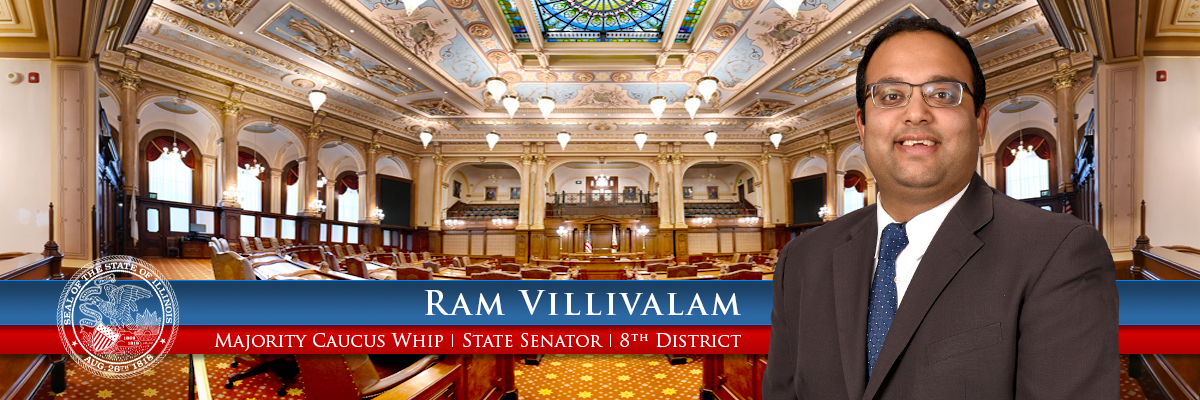Originally published on Bloomberg on July 21, 2021.
Illinois State Representative Jennifer Gong-Gershowitz attended public schools in Oak Park, a liberal town near Chicago, yet it wasn’t until law school that she learned anything about Asian American history, including how her Chinese immigrant grandparents fought deportation from Portland, Oregon.
That won’t be the case for the current generation of students in Illinois, which this month became the first U.S. state to require public schools teach Asian American history starting in the 2022-2023 school year. Governor J.B. Pritzker signed the Teaching Equitable Asian American Community History (TEAACH) Act into law on July 9, calling it a new standard “that helps us understand one another.” The landmark law broadly mandates that Illinois public elementary and high schools teach a unit of Asian American history.
“We are ensuring that the next generation has the opportunity to learn about Asian Americans’ contributions and experiences without attending law school or taking Asian American studies in college,” said Gong-Gershowitz, co-sponsor of the bill. “After all, Asian American history is American history.”
Support for the legislation gained momentum in the past year as racism and violence against Asians in the U.S. surged during the pandemic. Anti-Asian hate crimes in 16 major U.S. cities rose 164% in first quarter of 2021 compared to the previous year, according to the Center for the Study of Hate and Extremism at California State University San Bernardino. Non-profit coalition Stop AAPI Hate recorded more than 6,600 incidents of anti-Asian bias from March 2020 to March 2021.
“The unfortunate rise in anti-Asian hate made it even more urgent,” said Ram Villivalam, Illinois’s first and only Indian American state senator and another co-sponsor of the bill.
Passage of the TEAACH Act comes as Republicans raise objections to public schools and colleges teaching critical race theory, which argues that racism is ingrained in many American policies and institutions. But the Illinois bill received broad bipartisan support from Illinois lawmakers and unanimous votes in the State Senate.
“Republicans in our state legislature could see beyond that debate,” said Grace Pai, executive director for Asian Americans Advancing Justice Chicago, a civil rights group that led a coalition of about 35 organization that spearheaded the legislation.
The group started its campaign in March 2020 and partnered with nonprofits including the Cambodian Association of Illinois, Chinese Mutual Aid Association, Japanese American Citizens League Chicago and the Indo-American Center. The coalition organized dozens of meetings with local officials, weighed in on drafting the bill, and then brought in other supporters to back their campaign, such as groups that helped pass a bill in 2019 requiring Illinois schools to include LGBTQ+ history in lessons.
“We saw this campaign as a fight for a longer term solution to the discrimination and violence we’ve seen,” Pai said.
With a population of 23 million in the U.S., Asian Americans are the fastest-growing racial or ethnic group, and Illinois has the fifth-largest population in the country, behind California, New York, Texas and New Jersey. Yet U.S. school curricula usually does not include Asian Americans and Pacific Islanders.
In a 2016 study of U.S. history standards in 10 states, Asian Americans “have almost no place in the story of the United States,” wrote Sohyun An, a professor of education at Kennesaw State University in Georgia. In her new preliminary analysis of standards in 50 states, An found that 25 states included internment of Japanese Americans during World War II and 14 covered the Chinese Exclusion Act and Immigration Act of 1924, followed by a diminishing list of states covering various milestones.
“When included, Asian Americans are primarily depicted as victims of nativist racism with a lack of civic agency as well as new immigrants with little contribution to nation building,” wrote An.
“The long-term strategy to deal with racism has to be education.”
The Illinois law does not require specific curriculum but lets school boards choose content and decide how much time to spend on a unit. It broadly calls for education about the contributions of Asian Americans toward advancing civil rights from the 19th century onward, as well as contributions from individual Asian Americans and communities to the U.S. Further guidelines are in the works from the Illinois State Board of Education, which can recommend frameworks and instructional materials to school boards.
There are existing resources that schools can tap. The Asian American Education Project created educational materials to supplement the 2020 PBS documentary series “Asian Americans.” The project’s website has dozens of lesson plans created in conjunction with PBS LearningMedia and Asian Americans Advancing Justice.
“There are a lot of immediate things to address the violence. But the long-term strategy to deal with racism has to be education,” said Stewart Kwoh, founder of the project and former executive director of Asian Americans Advancing Justice-Los Angeles. “We have to get Americans to understand who we are — not foreigners, not model minorities.” Kwoh attended public schools in Los Angeles in the 1960s, but did not formally learn about Asian Americans until his college years at UCLA.
Some have already pioneered Asian American history in schools. Albert Chan, a social studies teacher at Niles North High School in Skokie, Illinois, created an Asian American history elective in 2017. His class has been so popular that he started teaching it at Niles West, another high school in Skokie. Thirty-four percent of his students are Asian American, Chan said.
Chan is an alumni of Niles North High School but didn’t learn about Asian Americans there or in college at University of Illinois Urbana-Champaign. Only as an adult did he learn about Angel Island, San Francisco’s counterpart to Ellis Island, and landmark Supreme Court cases such as Korematsu v. United States which fought internment of Japanese Americans, and other milestones.
“The students appreciate it. Many happen to be Asian American. They feel seen,” said Chan. “For the non-Asian students it’s a breath of fresh air. They have Asian friends and they want to learn more and educate themselves.”




